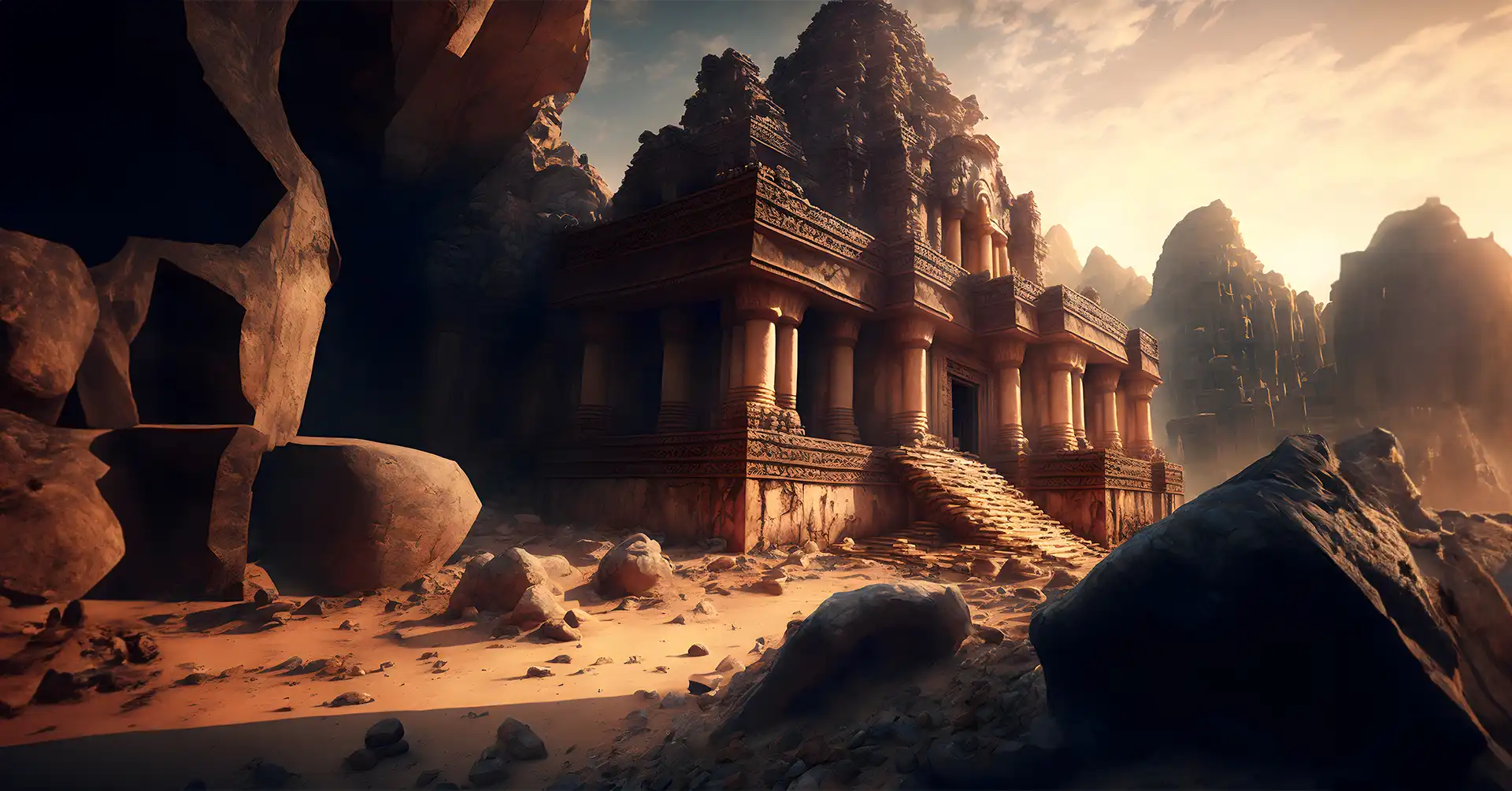Numerous ancient civilizations have perished historically because of natural calamities. Despite enormous gaps in time and geography, the natural world eventually decided the fate of each of these remarkable societies. In this article, we delve into the myths of these mysterious peoples, discovering their exceptional accomplishments and tribulations.
These ancient civilizations were prosperous in their own time and left behind innovations and cultural riches, from huge architectural wonders to intricate agricultural practices. Droughts, long winters, and shifting weather patterns all added to climate change’s unpredictability, which, in the end, proved to be a formidable opponent.
Reading their post will help us better grasp how these prehistoric societies managed to combine human ingenuity with the ruthless forces of nature. Join us as we explore top ancient civilizations that surmounted significant challenges brought on by natural causes.
Angkor Civilization
Between 1100 and 1200 CE, Angkor was a vast pre-industrial city constructed in Cambodia. This ancient Civilization was the glory of the Khmer Empire because of its stunning temples and water system. Angkor often experienced summer monsoons because of its closeness to the ocean, which it exploited to fill a vast network of reservoirs.
Over time, the monsoons’ cyclical pattern started to shift. This ancient civilization would have A hard climatic cycle, with intense monsoons followed by dry periods or weak monsoons. Between 1300 and 1400 CE, the city had some of its worst monsoons ever. Floods and droughts correspondingly reduced food output. Experts attributed the downfall of this civilization to a shortage of food and water.
Maya Civilization
For millennia, academics have been attracted by ancient civilizations like the Maya around the seventh and ninth centuries. These ancient civilizations are renowned for their intricate artwork, structures, and texts. It is thought to have arisen in the Yucatan Peninsula about 2600 BCE. Once upon a time, Mesoamerica’s Maya civilization served as its cultural hub.
Academics still need clarification on the Mayans’ explanation for why they destroyed their palaces and pyramids. Many people hold global warming responsible for its impacts. The “megadrought” of 800-1000 CE in this instance.
Fossil records show that this period saw severe droughts, greatly decreasing annual rainfall and thus lowering agricultural productivity. Around 950 CE, the Maya civilization essentially vanished.
Ancestral Pueblo Civilization
The Ancestral Pueblo is among the most well-known ancient civilizations wiped out by climate change. Ancestral Puebloans settled on what is now the Colorado Plateau about 300 BCE. Chaco Canyon, Mesa Verde, and the Rio Grande served as important population hubs for several indigenous communities.
They farmed and largely lived off their crops, especially maize. While some farmers waited for rain, others used river water to irrigate their crops.
This ancient civilization finally encountered a challenge that it had triggered. By removing trees to make space for agriculture, the Ancestral Pueblo people made the region less productive. Around this period, changes in the weather also started.
A shorter growing season and less precipitation contributed to reduced agricultural production. Around 1225 CE, the last of the ancient Puebloan communities disappeared.
Norse Civilization
As Norse people from northern Europe migrated to western Greenland between 900 and 1000 CE, ancient civilizations were created. They were soon followed by the Medieval Warm Period. Between 800 and 1200 CE, the period was characterized by above-average temperatures ideal for farming.
Norse farmers were among Europe’s most prolific for a considerable time. In 1300 CE, temperatures began to drop, ushering in the Little Ice Age. As temperatures decreased, the waters froze, growing seasons reduced, and species moved to other locations.
These ancient civilizations in Greenland weren’t precisely adapted to cold climates. Many experts attribute the loss of a society that depended on hunting, farming, and trade to cold weather. By 1550 CE, all Norse settlements had been abandoned.
Indus Valley Civilization
Around 3000 BCE, what is now Pakistan saw the emergence of ancient civilizations like the Indus Valley civilization. This ancient civilization’s advanced water management techniques and urbanism, known as the Harappan Civilization, are well known.
The Indus Valley’s inhabitants lived in crowded cities supported by trade and agriculture. After over a thousand years, both were at risk from climate change.
According to researchers, drought may have played a role in this civilization’s demise. A sharp population decline has been correlated with a decrease in monsoon rainfall about 2000 BCE. Other
Asian ancient civilizations were similarly affected by the burden on commerce caused by the environment. After a trying two centuries, the majority of the Indus Valley’s remaining people presumably went east.
Tiwanaku Civilization
Tiwanaku was the first ancient civilization that first appeared in the South American Andes about 300 BCE. Like many other cultures, the highland people were farmers, but their farming was more intensive. For instance, the Tiwanaku tribe created raised fields to regulate water and lessen soil erosion. The summer monsoons were crucial to this community’s agricultural development.
It is currently believed that Tiwanaku’s downfall was mostly due to drought. The humid and warm environment contributed to the prosperity of this civilization after 500 CE. Climate change started about 1000 BCE. In the annals of ancient civilizations, Tiwanaku endured a century without rainfall. When irrigation lakes dried up, crops failed. 1100 CE abandoned the bulk of Tiwanku cities and farmland.
Cahokia Civilization
A contemporary Cahokia civilization is most likely located in Illinois. The Mississippi Valley most likely saw a permanent Cahokian settlement about 700 CE. This ancient civilization performed religious ceremonies on clay mounds. The heavy rains around the turn of the first century benefited Cahokia. During this time, the agricultural culture spread across the region.
According to research, the affected ancient civilization began to experience the negative effects of climate change around the turn of the second century. The fall of the Cahokia civilization followed 150 years of drought.
Settlements started disintegrating by 1300 CE, and civilization disappeared by 1350 CE. Most experts agree that climate change had a significant effect even though it was probably not the main offender.
Rapa Nui Civilization
An ancient civilization called Rapa Nui, sometimes called Easter Island, developed on an island off the coast of Chile between the years 400 and 700 CE. It was a thriving agricultural village for many centuries. Widespread European colonization of the region started in the 1700s.
They massacred whole tribes of indigenous people and welcomed hordes of strangers. This civilization may have developed to the point that, at its height, it could support up to 20,000 people.
Scholars have proposed that Rapa Nui’s demise was caused by overpopulation and changing weather patterns. There were severe droughts during the Little Ice Age, which began about 1300 CE.
At the same time, the formerly fertile soil started to degrade due to abuse. The population’s hunger increased at the same time when food yields were declining. As a result, this ancient civilization had a prolonged food shortage and eventually perished before 1800.
The Greenland Vikings
According to the Icelandic sagas, Erik the Red led a fleet of 25 ships to establish Greenland in the year 985 A.D. after being banished from Iceland for murder. This ancient civilization founded two Viking settlements, one in the east and one in the west.
They farmed goats, sheep, and cattle, built stone chapels still in use, and engaged in caribou and seal hunting. Their population rose to about 5,000 after hundreds of years of success—or, at the very least, survival. A missionary expedition arrived in the region in 1721 to convert the locals to Protestantism.
According to archaeological studies, the Eastern Settlement was abandoned a few decades after the Western Settlement failed in about 1400 AD. It’s almost certain that the Little Ice Age, which started in the 14th century and made it difficult to get to and from Greenland because of sea ice and shorter growing seasons in already marginal locations, had a part. The Viking Greenlanders’ main export, walrus ivory, had a market collapse, further worsening the situation. But the reason for death is still unknown.
Experts disagree on whether this ancient civilization died from starvation, the Black Plague, or the Inuit, who arrived from Canada about 1200. Some claim that they returned to Iceland and Scandinavia. At least the Vikings weren’t the only ones that failed. At least three more civilizations have perished in Greenland in addition to the Dorset, who temporarily coexisted there with the Vikings and the Inuit.
Conclusion
Ancient civilization has risen and fallen, and climatic change has caused many of them. From Angkor to the Greenland Vikings, environmental changes presented distinct problems. Agricultural civilizations are vulnerable to precipitation and temperature variations.
The Maya, Angkor, and Ancestral Pueblo demonstrate the delicate balance between water and food production. Droughts and irregular monsoons affected their agriculture, causing social hardship and deterioration. The Little Ice Age changed the environment, which killed the Norse immigrants in Greenland.
The story of these ancient civilizations emphasizes our environmental connection. They emphasize adaptation and sustainability in climate change. These historical lessons emphasize the need for responsible planet care to sustain our civilizations as we face comparable difficulties now.
Read the Latest Culture and Cuisine blogs here.






